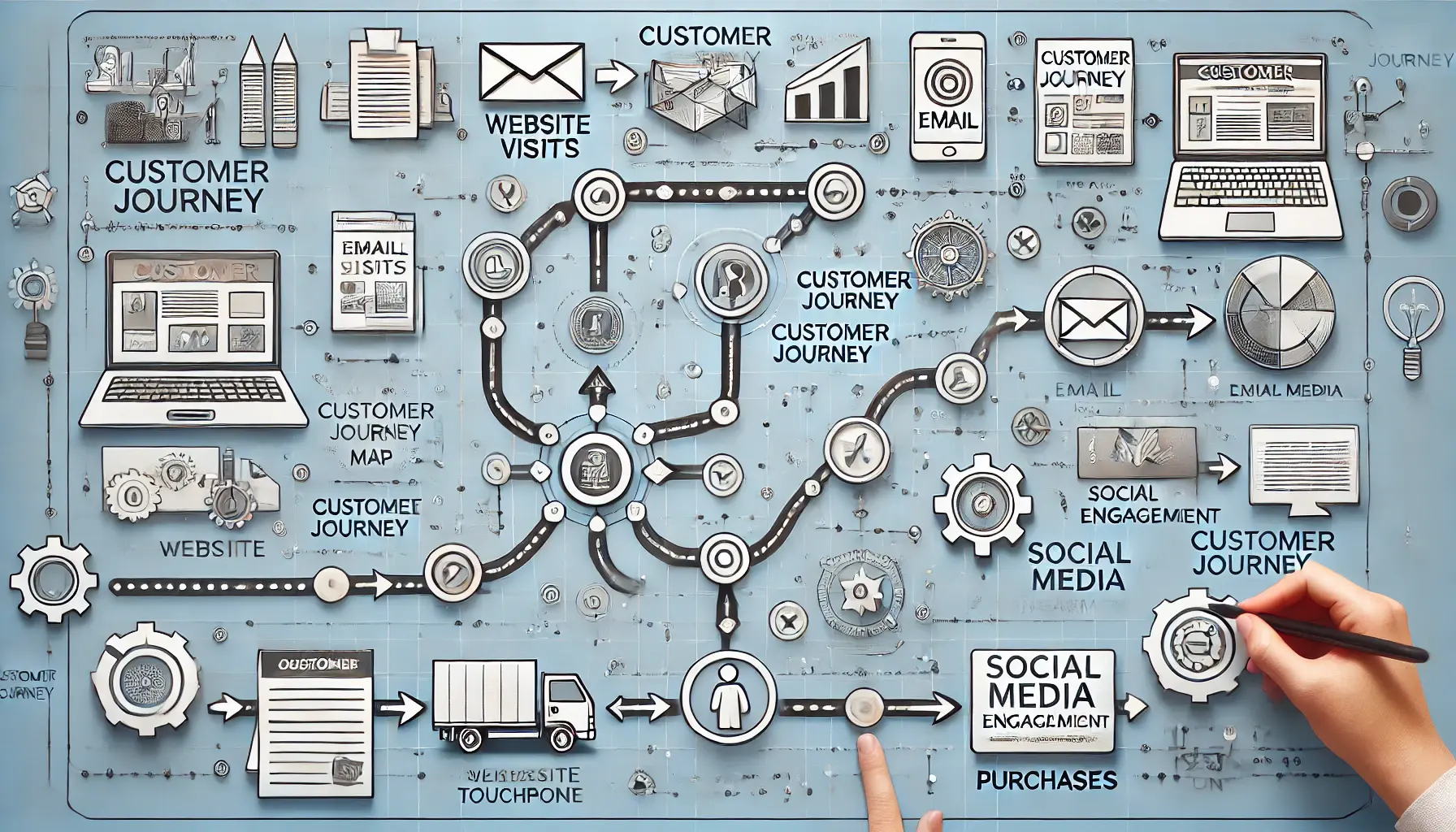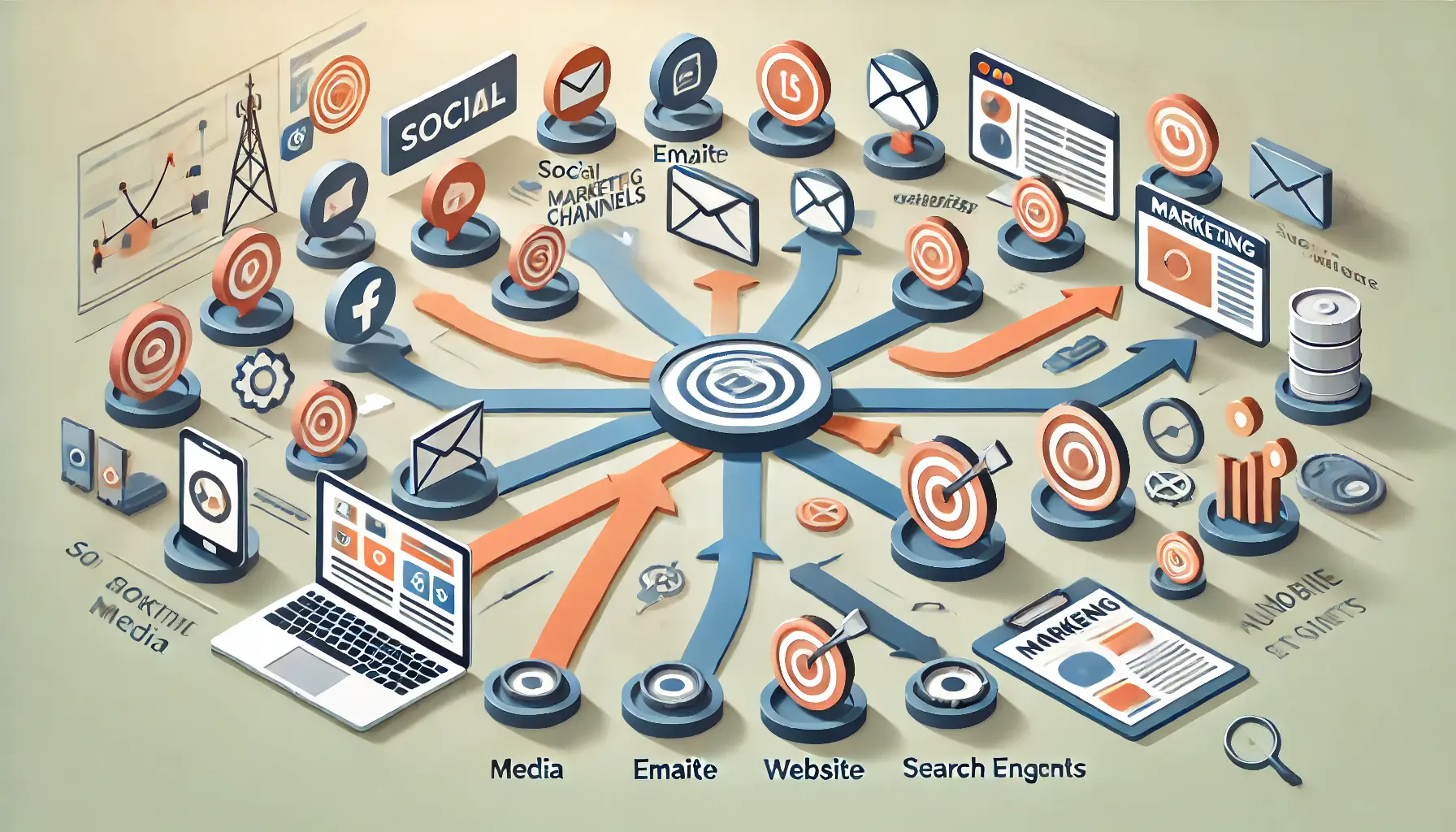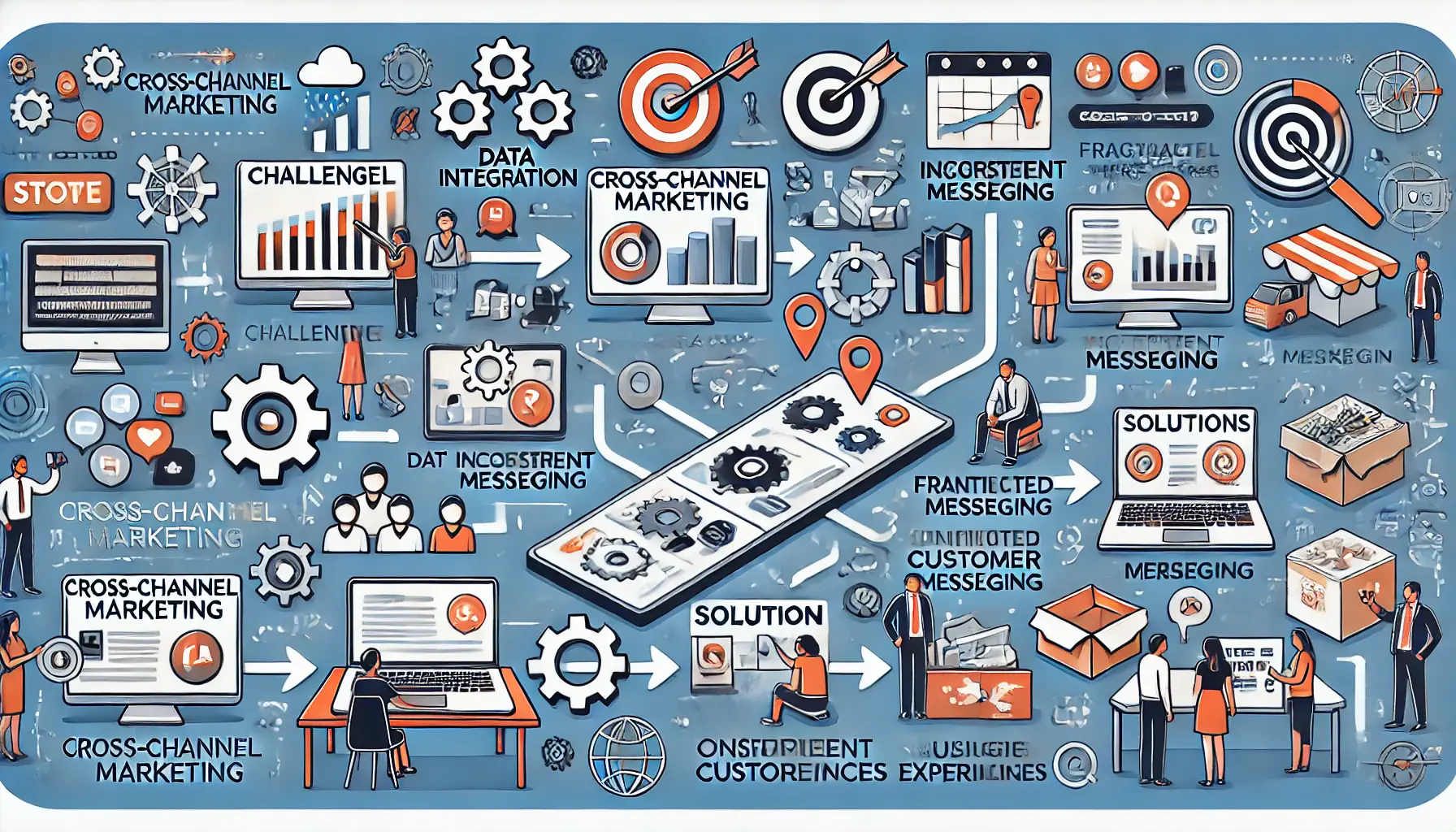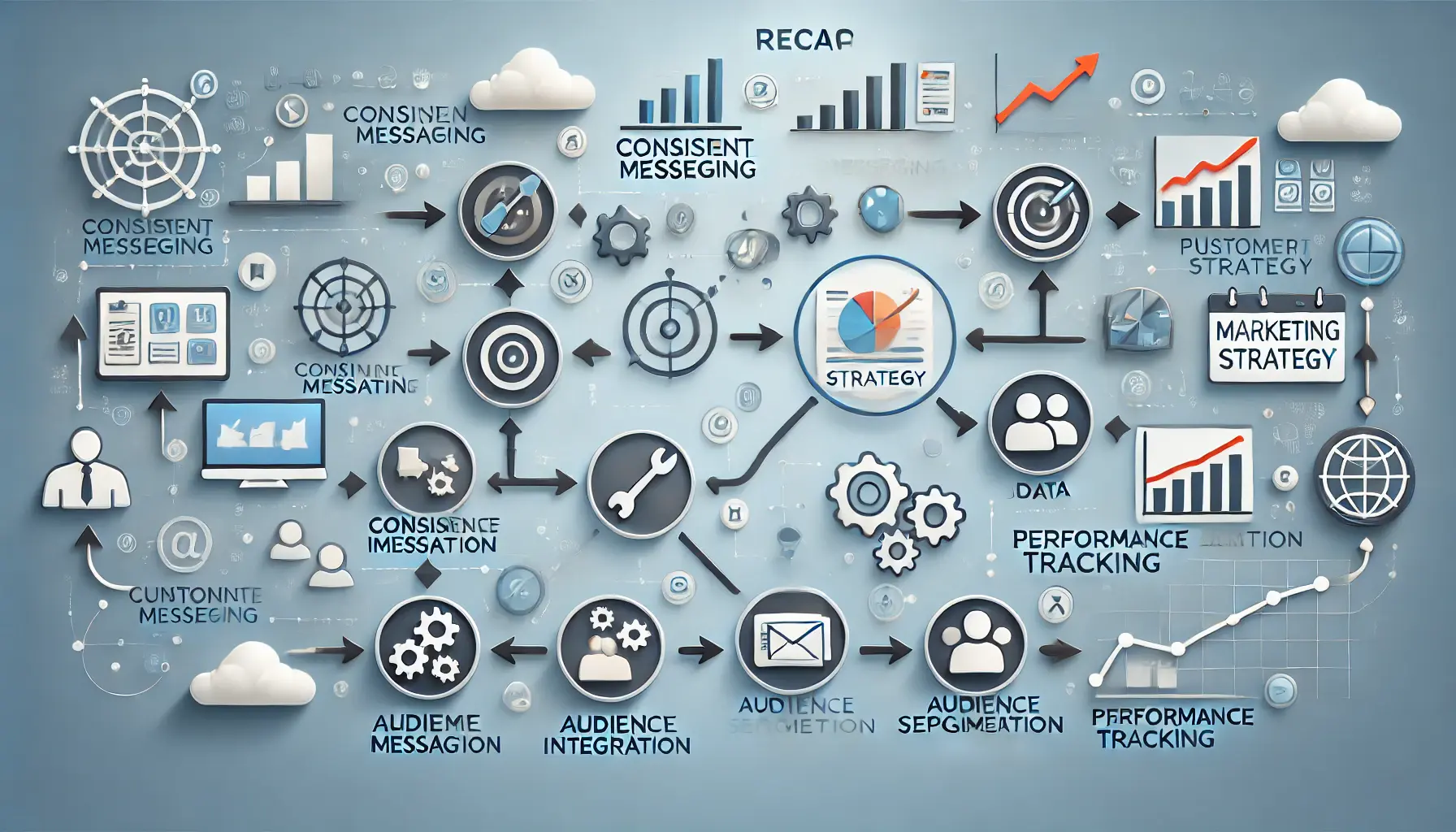In the modern competitive digital marketing space, the adoption of cross-channel marketingA marketing strategy integrating multiple platforms to deliver a unified customer experience. approaches has become very important for maximizing the output of advertising efforts.
This approach places great emphasis on delivering a seamless and cohesive customer experience across multiple platforms, ensuring that your message is effectively communicated to your audience.
But how can you actually tap into the power of cross-channel marketing in your advertising?
In this article, we’ll explore various strategies and practical tips to help you achieve success in this dynamic field.
- Understanding Cross-Channel Marketing
- Key Components of a Successful Cross-Channel Campaign
- Top 9 Cross-Channel Marketing Strategies
- Best Practices for Cross-Channel Marketing
- Challenges in Cross-Channel Marketing and How to Overcome Them
- Mastering Cross-Channel Marketing for Advertising Success
- Cross-Channel Marketing: Frequently Asked Questions
Understanding Cross-Channel Marketing
To fully leverage cross-channel marketing, it’s important to understand its fundamentals.
At its core, cross-channel marketing involves integrating and aligning your marketing efforts across different platforms to create a unified customer experience.
This approach goes beyond merely running ads on multiple channels; it’s about ensuring consistency and harmony in your messaging, visuals, and objectives.

Illustration of cross-channel marketing elements emphasizing integration and importance.
Definition and Importance
Cross-channel marketing refers to a strategy where businesses use a combination of marketing channels to engage customers at every stage of their journey.
This approach ensures that the customer receives a consistent and relevant message regardless of the channel they interact with.
Why is this important?
Because today’s consumers expect a seamless experience, and meeting these expectations can lead to increased brand loyalty and conversions.

Illustration of the contrast between cross-channel and multichannel marketing approaches.
Differences Between Cross-Channel and Multichannel Marketing
It’s easy to confuse cross-channel marketing with multichannel marketingA strategy that uses multiple platforms independently without integration., but the two have distinct differences.
While multichannel marketing involves using multiple platforms independently to reach customers, cross-channel marketing integrates these platforms to provide a cohesive experience.
For instance, a customer might see an ad on social media, receive a follow-up email, and then encounter similar messaging on your website—all of which are interconnected and intentional.

Illustration of the key benefits derived from implementing cross-channel marketing strategies.
Benefits of Implementing Cross-Channel Strategies
- Improved Customer Engagement: By delivering consistent messages, you can better capture and retain your audience’s attention.
- Enhanced Brand Recognition: A unified approach strengthens your brand’s identity across different platforms.
- Higher Conversion Rates: Seamless transitions between channels can lead to a smoother customer journey, increasing the likelihood of conversions.
- Better Data Insights: Cross-channel marketing strategies provide valuable data that can be used to refine and optimize your campaigns further.
Understanding cross-channel marketing and its benefits lays the groundwork for creating impactful campaigns that resonate with your target audience.
As we go along, we will cover the main elements that will ensure the success of a cross-channel marketing strategy.
Cross-channel marketing integrates marketing efforts across platforms to provide a seamless customer experience. It ensures messaging, visuals, and objectives are consistent, making it a crucial strategy in today’s digital landscape.

Visual representation of essential components for a successful cross-channel marketing campaign.
Key Components of a Successful Cross-Channel Campaign
Embarking on a cross-channel marketing campaign requires a strategic approach to ensure consistency and effectiveness across all platforms.
Let’s delve into the essential elements that contribute to a successful cross-channel marketing strategy.

Illustration of the importance of maintaining consistent messaging across various marketing platforms.
Consistent Messaging Across Platforms
Messaging needs to be consistent across the board.
Your audience should hear the same key message whether they are on social media, opening an email, or visiting your website.
This consistency fosters trust and strengthens brand identity.
- Unified Brand Voice: Create a guide for the brand voice so that all communications have the same tone and style.
- Coherent Visual Identity: Use consistent colors, logos, and design elements across varied platforms.
- Synchronized Content Calendar: Plan and schedule content to maintain message alignment across channels.

Illustration of personalization and segmentation strategies for targeted customer engagement.
Personalization and Customer Segmentation
Understanding your audience allows for the creation of messages that resonate personally.
Segmenting customers by demographics, behaviors, and preferences enables marketers to speak more effectively with them.
- Data-Driven Insights: Employ analytics to collect information regarding customer interactions and preferences.
- Personalized Content: Produce content to directly address the needs and interests of different customer segments.
- Dynamic Personalization: Real-time personalization automatically adjusts messages based on what is currently motivating the customer’s behavior.

Illustration of the process of data integration and analytics for informed decision-making.
Data Integration and Analytics
The integration of data from all marketing channels into one platform allows a clear overview of customer interactions and enables effective decision-making for the optimization of campaigns.
- Centralized Data Management: Store data coming from different sources in one place for easier analysis.
- Performance Metrics: Keep an eye on KPIs to measure the success of your cross-channel efforts.
- Continuous Optimization: Leverage data insights to iterate on strategies and enhance campaign performance over time.
By focusing on these key components, you can create a cohesive and effective cross-channel marketing campaign that engages your audience and drives results.
Next, we’ll explore the top strategies to implement in your cross-channel marketing efforts.
- Consistent messaging builds trust and reinforces brand identity.
- Personalization enhances customer engagement by addressing specific needs.
- Data integration allows for informed decision-making and campaign optimization.

Illustration of the top strategies in cross-channel marketing with interconnected platforms.
Top 9 Cross-Channel Marketing Strategies
Implementing effective cross-channel marketing strategies is essential for delivering a seamless customer experience and maximizing engagement.
Let’s explore nine impactful approaches to enhance your marketing efforts.

Visual representation of the integration of social media advertising across multiple platforms.
1. Social Media Advertising Integration
Leveraging social media platforms allows you to reach a broad audience and engage with them interactively.
Integrate your advertising efforts across platforms like Facebook, Instagram, and LinkedIn to maintain consistent messaging and reinforce brand identity.
- Targeted Campaigns: Utilize platform-specific targeting features to reach your ideal audience.
- Consistent Visuals: Ensure that your brand’s visual elements are uniform across all social media channels.
- Engagement Monitoring: Track interactions to gauge campaign effectiveness and adjust strategies accordingly.

Visual representation of email marketing coordination within a cross-channel strategy.
2. Email Marketing Coordination
Email remains a powerful tool for personalized communication.
Coordinate your email marketing with other channels to provide a cohesive experience.
- Personalization: Customize emails based on customer behavior and preferences.
- Automated Workflows: Build automation that triggers timely, relevant messages.
- Cross-Promotions: Use emails to promote content or offers available on other channels to drive cross-channel engagement.

Illustration of search engine marketing alignment between paid and organic efforts.
3. Search Engine Marketing Alignment
Align your search engine marketing so your brand shows consistently in both search results and advertisements.
- Keyword Consistency: Utilize similar keywords across channels to reinforce messaging.
- Landing Page Optimization: Ensure landing pages provide a seamless transition from ads, reflecting the same offers and information.
- Performance Analysis: Periodically analyze SEM performance to keep cross-channel strategies informed and optimized.

Visual representation of synchronized content marketing strategies across different platforms.
4. Content Marketing Synchronization
Providing value with content to your audience on multiple touchpoints builds trust and positions your brand as an authority in the marketplace.
- Unified Content Strategy: Develop content themes that can be adapted for various platforms.
- Platform-Specific Adaptation: Modify content to suit the format and audience of each channel.
- Consistent Posting Schedule: Maintain a regular posting schedule to keep your audience engaged across all platforms.

Illustration of a cohesive mobile marketing strategy across various devices and platforms.
5. Mobile Marketing Harmonization
With the increasing use of mobile devices, harmonizing your marketing efforts for mobile users is crucial.
- Responsive Design: Ensure that all digital content is mobile-friendly.
- SMS Campaigns: Utilize SMS marketing to reach customers directly on their mobile devices.
- App Integration: If applicable, integrate marketing efforts within your mobile app to enhance user engagement.

Illustration of influencer partnerships working across multiple platforms in a unified marketing strategy.
6. Influencer Partnerships Across Channels
Collaborating with influencers can amplify your reach and build trust with your audience.
- Strategic Selection: Choose influencers whose audience aligns with your target market.
- Cross-Platform Promotion: Engage influencers to promote your brand across multiple channels.
- Authentic Content Creation: Work with influencers to create genuine content that resonates with their followers.

Illustration of the automation and efficiency of programmatic advertising deployment.
7. Programmatic Advertising Deployment
Programmatic advertising uses automated technology to buy and place ads across various channels efficiently.
- Real-Time Bidding: Leverage real-time data to bid for ad placements that reach your target audience.
- Audience Segmentation: Utilize data to segment audiences and execute targeted ads.
- Performance Tracking: Engage in ad performance tracking for real-time optimization and campaign adjustments.

Illustration of how direct mail and digital marketing strategies can work together.
8. Direct Mail and Digital Integration
Combining traditional direct mail with digital marketing efforts can create a comprehensive cross-channel experience.
- Coordinated Messaging: Ensure that direct mail content complements your digital campaigns.
- Personalized Offers: Send targeted, personalized offers by using customer data via direct mail.
- Digital Call-to-Action: Include clear calls-to-action for engaging with your brand online within the mailings.

Illustration of how event marketing is enhanced with digital support and virtual engagement.
9. Event Marketing with Digital Support
Physical or virtual events supported with digital marketing amplify engagement and reach.
- Pre-Event Promotion: Build anticipation and encourage attendance with digital channels.
- Live Engagement: Leverage social media and live streaming to reach a larger audience during the event.
- Post-Event Follow-Up: Continue engagement with attendees through emails and social media, reinforcing key messages and offers.
Implementing these cross-channel marketing strategies will help create a cohesive and engaging experience for your audience, ultimately driving better results for your campaigns.
Explore diverse strategies like social media integration, email coordination, influencer partnerships, and programmatic advertisingThe use of automated technology to buy and place ads across channels efficiently. to amplify the impact of cross-channel campaigns.

Illustration of the key best practices for integrating and optimizing cross-channel marketing efforts.
Best Practices for Cross-Channel Marketing
Implementing cross-channel marketing effectively requires adherence to certain best practices to ensure a cohesive and engaging customer experience.
Let’s explore some key strategies to enhance your cross-channel marketing efforts.

Illustration of the process of unifying data from multiple marketing channels into a central system.
1. Unify Your Data
Centralizing data from various channels provides a comprehensive view of customer interactions, enabling more informed decision-making.
- Data Integration: Consolidate data from all marketing platforms into a single system for seamless analysis.
- Data Quality Management: Regularly update and cleanse data to maintain accuracy and prevent misleading insights that could negatively impact business decisions.

Illustration of the customer journey map showing various touchpoints in the customer experience.
2. Map the Customer Journey
Mapping the customer journeyThe complete experience a customer has when interacting with a brand, from initial contact to post-purchase. helps in delivering contextually relevant and timely communications across diverse touchpoints, including online interactions, emails, and customer support channels.
This improves customer relationships and builds trust.
- Customer Journey Mapping: Identify key touchpoints and interactions where customers engage with your brand.
- Behavioral Analysis: Analyze customer behavior to anticipate needs and deliver personalized experiences.

Illustration of audience segmentation, showing customer groups being targeted with tailored content.
3. Audience Segmentation
Segmenting your audience allows for targeted messaging that resonates with specific groups.
- Demographic Segmentation: Group customers based on age, gender, income, and other characteristics for tailored messaging.
- Behavioral Segmentation: Segment customers based on their interactions and engagement with your brand.

Illustration of the strategic process of choosing the right marketing channels for different audience segments.
4. Choose the Right Channels
Selecting appropriate channels ensures that your message reaches the intended audience effectively.
- Channel Analysis: Evaluate the performance of different channels to identify the most effective ones for reaching your audience.
- Resource Allocation: Focus marketing resources on channels that yield the highest engagement and conversions.

Illustration of delivering personalized content across multiple marketing platforms to a specific customer profile.
5. Deliver Personalized Content
Personalization amplifies customer engagement by offering relevant and meaningful content tailored to individual preferences.
- Dynamic Content: Use customer data to create content that dynamically adapts based on individual behavior and preferences.
- Personalized Recommendations: Suggest products or services based on past interactions and purchases.

Illustration of the importance of maintaining consistent branding across different marketing platforms.
6. Maintain Consistent Branding
Consistency in branding across all channels builds trust and reinforces brand identity.
- Brand Guidelines: Develop and enforce guidelines to ensure uniformity in messaging, visuals, and tone across all platforms.
- Cross-Channel Coordination: Align marketing teams to maintain consistency in branding and messaging across various channels.

Illustration of the continuous process of testing, learning, and refining marketing strategies.
7. Test, Learn, and Iterate
Continuous testing and optimization are important for refining cross-channel marketing strategies.
- A/B Testing: Experiment with different elements to determine what resonates best with your audience.
- Performance Metrics: Monitor key performance indicators to assess effectiveness and make data-driven adjustments.
By following these best practices, you can create a cohesive and effective cross-channel marketing strategy that improves customer engagement and drives business success.
- Unify data for comprehensive customer insights.
- Map the customer journey for timely and relevant communications.
- Maintain consistent branding across all channels.
- Test and optimize strategies to improve effectiveness.

Illustration of the challenges and solutions in cross-channel marketing.
Challenges in Cross-Channel Marketing and How to Overcome Them
Implementing a successful cross-channel marketing strategy comes with its set of challenges.
Understanding these obstacles and learning how to address them is crucial for creating a seamless customer experience.
Let’s explore some common challenges and effective solutions.

Illustration of the data integration process in marketing, with diverse data sources flowing into a unified system.
1. Data Integration
Integrating data from various channels to form a unified customer view can be complex.
- Challenge: Data collected from each channel is different and thereby very difficult to consolidate.
- Solution: Invest in a robust customer data platform that collects data from multiple touchpoints, providing a single view of the customer. This improves targeting and personalization of marketing activities at a granular level.

Illustration of consistent messaging across various marketing channels.
2. Consistent Messaging
Maintaining consistency in messaging across all channels is very important yet challenging.
- Challenge: Ensuring that all platforms convey the same message to avoid customer confusion.
- Solution: Create sound brand guidelines and deliver a unified content calendar to ensure consistent messaging across channels.

Illustration of personalized marketing experiences tailored to individual customer preferences.
3. Personalization
Personalizing experiences across touchpoints relies on data accuracy and coordination.
- Challenge: Fragmented data limits the ability to deliver messages relevant to each individual’s preferences.
- Solution: Use analytics to gain insights into customer behavior and preferences, enabling the creation of personalized content that effectively targets different segments.

Illustration of coordinated marketing efforts across multiple channels.
4. Channel Coordination
Coordinating multiple marketing channels to work in harmony is not easy.
- Challenge: Various channels may work independently, resulting in a fragmented customer experience.
- Solution: Implement an integrated multi-channel marketing platform that allows you to manage and track all channels on a single dashboard, ensuring consistent strategies and execution.

Illustration of measuring success in marketing through performance tracking and data analysis.
5. Measuring Success
Measuring the actual success of cross-channel marketing is not an easy task.
- Challenge: Lack of standardized metrics for evaluation across different channels.
- Solution: Define clear KPIs and leverage advanced analytics tools to monitor and measure the performance of campaigns across multiple channels.
By understanding these challenges and learning how to overcome them, you can fine-tune your cross-channel marketing to deliver a better-integrated customer experience and a higher-performing campaign.
Common challenges include data integration, consistent messaging, and measuring success. Solutions involve using unified platforms, enforcing brand guidelines, and setting clear KPIs.

Illustration of mastering cross-channel marketing for advertising success through integration and coordination of multiple platforms.
Mastering Cross-Channel Marketing for Advertising Success
Cross-channel marketing is more than just a buzzword; it’s a transformative strategy that integrates multiple platforms to create a unified and seamless customer experience.
In today’s competitive digital landscape, adopting cross-channel marketing approaches can significantly enhance your advertising efforts and drive business growth.

Illustration of key marketing components working together as part of a unified strategy.
Recap of Key Components
Throughout this article, we explored the fundamental components of cross-channel marketing that contribute to its success:
- Consistent Messaging: Building trust and reinforcing your identity by ensuring your brand voice and visuals are consistent across every channel.
- Personalization: Tailoring content to the needs of individual customers nurtures engagement and loyalty.
- Data Integration: A single view of customer data allows for precise targeting and informed decision-making.

Illustration of various strategies working together to amplify marketing impact.
Strategies to Amplify Impact
We explored nine powerful ways to drive the use of cross-channel marketing:
- Social media advertising integration for interactive engagement with a wide audience segment.
- Coordinating email marketing to provide an integrated communication experience.
- Alignment of search engine marketing for visibility and messaging consistency.
- Synchronization of content marketing to establish authority and build trust.
- Harmonization of mobile marketing to address the increasing use of mobile devices.
- Influencer partnerships to amplify reach and credibility.
- Programmatic advertising for efficient, data-driven ad placements.
- Direct mail and digital integration to create a comprehensive marketing approach.
- Event marketing with digital support to maximize engagement and attendance.

Illustration of overcoming challenges for seamless marketing execution.
Addressing Challenges for Seamless Execution
We also highlighted common challenges in cross-channel marketing, such as data integration, consistent messaging, personalizationTailoring messages, content, or offers to individual customer preferences and behaviors., and measuring success.
Implementing solutions like advanced analytics, unified data platforms, and clear KPIs ensures that these hurdles are effectively overcome.

Illustration of best practices for achieving sustainable long-term marketing success.
Best Practices for Long-Term Success
To sustain a successful cross-channel marketing strategy:
- Centralize and manage your data for actionable insights.
- Map out and analyze the customer journey for improved targeting.
- Choose the most effective channels to allocate resources wisely.
- Maintain consistent branding to build trust and recognition.
- Continuously test, learn, and iterate to refine your campaigns.
By implementing these practices, you create a cohesive and engaging experience for your audience, ultimately driving better results.

Illustration of the final steps in a marketing strategy, focusing on evaluation and conclusions.
Final Thoughts
Mastery in cross-channel marketing requires dedication, strategic planning, and adaptability.
To ensure that a business is realizing its advertising potential, focus on message consistency, integrated data, personalization, and addressing potential challenges.
Whether you are a small business or an established enterprise, adopting cross-channel marketing strategies will empower you to build valuable relationships with your audience and grow sustainably.
Cross-channel marketing requires dedication and adaptability. Focus on integration, consistency, and personalization to build trust and drive long-term business growth.

Illustration of the exploration and clarification of common questions in cross-channel marketing.
Your campaigns can be managed by an agency specialized in Google Ads, check out our service page.
Cross-Channel Marketing: Frequently Asked Questions
Cross-channel marketing involves the integration of multiple platforms to create a seamless customer experience.
Below are common questions and concise answers to help you understand this strategy better.
Cross-channel marketing uses multiple platforms to deliver a unified customer experience, ensuring consistent messaging across all channels.
Whereas multichannel relies on various platforms independently, cross-channel works by integrating these touchpoints for a connected customer experience.
It helps improve customer engagement, enhances brand consistency, and raises conversion rates through a consistent and seamless experience.
The major issues involve data integration, consistent messaging, personalization, and accurate campaign measurement.
Success can be measured through KPIs like conversion rates, customer engagement, and return on investment (ROI).
Tools include marketing automation platforms, CRM systems, and analytics tools to manage and analyze campaigns effectively.
By delivering consistent and personalized messages across platforms, it creates a seamless and engaging customer journey.
Best practices include unifying data, mapping the customer journey, choosing the right channels, and maintaining consistent branding.
Yes, small businesses can adopt cross-channel strategies by leveraging appropriate tools and focusing on key channels relevant to their audience.














